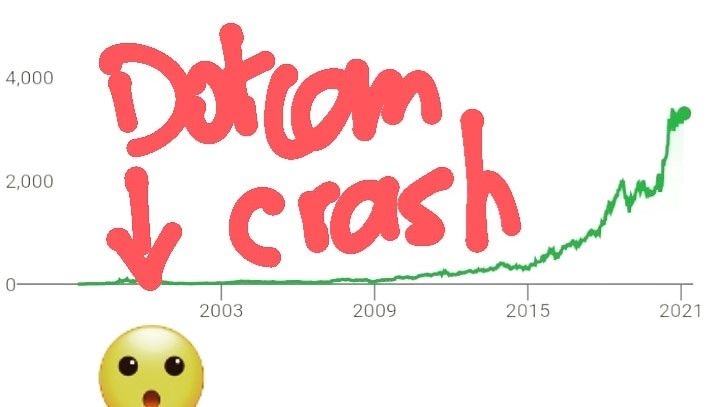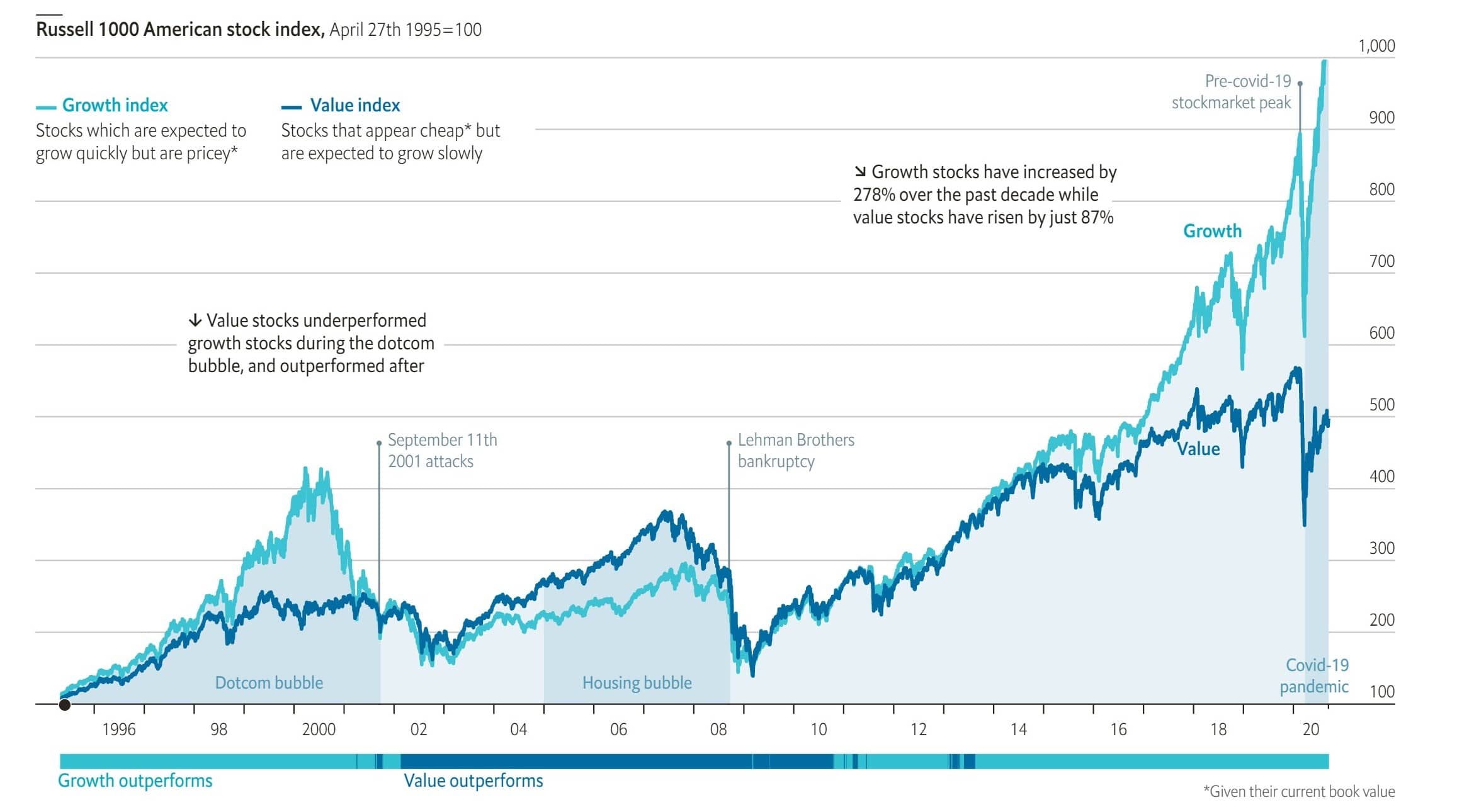Incoming Market Crash🙃 or best time to invest ever🤑?

Do you know what's worse than not being prepared in case of a market crash? To prepare too much, too early, and miss some of the biggest rallies of all time. But the resemblance between the 2000 Internet stocks bubble and current market conditions is striking. So what should we do?
The bullish stance (aka euphoria believers)🤑
“Interest rates are like gravity in valuation. If interest rates are nothing, values can be almost infinite. Warren Buffet.
There are 4 main reasons why bulls are so bullish in justifying the current market euphoria and market rally over the long term. The first 3 have a direct impact on productivity levels that sustain economic growth.
- Prominent Tech Breakthroughs. Labs developed COVID-19 vaccines in record time thanks to the promising life science technology "messenger RNA". AI made a giant leap forward recently, think of the remarkable GPT-3 natural language algorithm, which learned arithmetic for itself, or DeepMind's breakthrough ability to predict protein shapes and change forever how biologists work with tech. We also made engineering progress toward making green energy almost as cost-effective as fossil fuels.
- Booming Investment in Tech. In the second semester of 2020, the US spent more on computers, software, and R&D than on buildings and industrial gear for the first time in over a decade. Public spending on R&D across 24 OECD countries begin to grow again, and investment funds are pilling into new techs such as EVs.
- Pandemic-led Tech adoption. "Thanks to lockdowns", the adoption of Videoconferencing, e-commerce, digital banking, telemedicine, and industrial automation, has accelerated like never before, hence improving the prospects of productivity gains for the next decade.
- Low-interest rates. I know you have heard it before, but what does it mean in simple terms? Think of the cost opportunity you have to consider when investing. Why should you invest in stocks if another asset has a better yield with a similar risk? The opposite is also true, and right now, there are not many asset class that has better yield than the US Stock market, which is why more money is pouring into it, which in turn makes the prices go up, without any reason to go down while the interest rates keep being that low.
The bearish stance (aka crash believers.)🙃
"For now, technology valuations are based, to a far greater degree than in the 1990s, on what could be rather than what is. Invest accordingly." The Economist, Sept 2020.
GMO founder and market historian Jeremy Grantham is one of the "bears". Why should we care about what he has to say? Because he happens to have called the 2000 Dotcom bubble, the Japan 1989 bubble, and the 2007 housing bubbles. Not a bad track record! So what troubles Jeremy so much? Many things, including:
- The "Buffett indicator," total stock market capitalization to GDP, broke through its all-time-high 2000 record.
- In 2020, there were 480 IPOs (including an incredible 248 SPACs2) – more new listings than the 406 IPOs in 2000.
- 150 non-micro-cap companies (with a market capitalization of over $250 million) more than tripled in the year, around 3 times as many as any year in the previous decade.
- The volume of small retail purchases (less than 10 contracts) of call options on US equities has increased 8-fold compared to 2019, and 2019 was already well above the long-run average.
More unsettling maybe is the similarity between the bull's stances now and back in the late 90s. Then it was the dawn of a new economy, built on more powerful computers, fancy software, and the internet. Rings a bell?
Investing in value stocks, which just have had their worst decade ever, and emerging markets, is what Jeremy recommends to investors.

The cost of sobriety.
"Timing the bursting of bubbles has a long history of disappointment." Source: Jeremy Grantham
Now imagine there is indeed a bubble, and it will burst. You may regret it if you go too conservative too soon. Imagine for a second there will be a -40% market correction "soon", but nobody knows when, and you get out of the market now, just for the bubble to burst 6 months later. At the current frenetic pace of the market, you may have lost on more than 40% of market gains in those 6 months. Similarly, if you stayed out of the stock market after COVID struck, you missed on an astonishing +90% for the NASDAQ from March's low.
Here is my plan.
I am going for the middle ground, taking some of the value Investing tools to add to my Growth-oriented philosophy of buying future bets. The objective is to lower the risk without giving up totally the potential gains from growth stocks in the next few months.
- First things first, a crash hurts a lot less when you have some liquidity, as these crashes are a great time to invest. I am progressively adding to my cash position to represent at least 15% of my current portfolio.
- If bubble there is, is it mostly on US growth stocks and US bonds. I live in Chile and already have my retirement account fully invested in Non-US fixed-income assets such as bonds and corporate debt. It represents about 30% of my total savings. Note that these amounts are not invested through my eToro account, which means I can take greater risk in it.
- 3 months ago, I updated my stock scorecard and gave more weight to value-investing metrics such as historical return on capital invested and historic operating margin. However, I did not scrap growth mentality, which better values intangible assets such as Network effects, culture, patents, and brand. This tweak made me bet in stocks such as Life Store (LSI) and Jack Henry (JKHY) in the last few months, which I define as "Value stocks with growth assets".
In case the dreaded crash never happens, I should still benefit from my US growth stocks exposure. Nevertheless, It will be tricky to maintain the cash, value stocks, and fixed-income assets proportions from the total portfolio, as US-growth exposure will probably keep climbing much more rapidly than the rest. I will continually add to my cash position to counter that, and include both value and growth variables in my stock picks for the foreseeable future.
If the crash does happen, it will be ugly, but you cannot lose your mind and cold blood. Else, you will make bad decisions. Just remember that back in 2000, Amazon lost 90%🙀 of its value from its "high" of 90 USD per share. It is now more than 3.300 USD and counting... Stock picking is hard, but fun, so happy investing everyone!